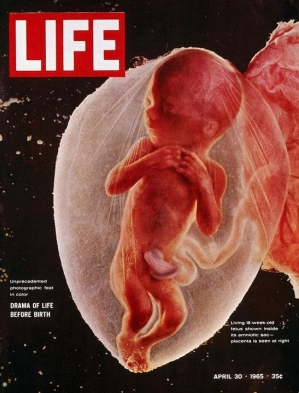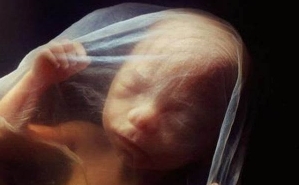Lennart Nilsson, the Swedish photographer whose detailed photos of unborn babies helped spur the anti-abortion movement the 1970s and early 1980s, has passed away at 94.
According to the New York Times, Nilsson, who passed away at a nursing home in Stockholm on January 28, "fused artistic and scientific virtuosity to blaze a new frontier in photography, especially within the womb." During his lengthy career, Nilsson used an ultra-fine tube called an endoscope to take pictures of cells and blood vessels and is credited with the first photographs of the AIDS virus and the Severe Acute Respiratory Syndrome (SARS) virus.
He was best known for his images of embryos and fetuses which first appeared in Life Magazine under the title "The Drama of Life Before Birth" in 1965, and then in the book, "A Child is Born", which sold eight million copies. According to The Local, "A Child is Born" became an "iconic work" for the anti-abortion movement; for decades, his photographs of unborn children were splashed across pro-life literature.

"When the supporters of abortion were arguing that the baby was nothing more than a 'blob of tissue,'" Dr. Randall K. O'Bannon, NRLC director of education & research told LifeNews, "these photographs were exposing that lie on the magazine racks of checkout counters all across America."
While his photos were groundbreaking for the pro-life movement, Nilsson himself never ventured into the discussion of when life begins, according to the Press Herald.
"If you are religious, you may believe that life starts 24 hours after fertilization," he remarked. "Some scientists think it's when the heart starts beating, 16 to 18 days after fertilization. It depends on yourself. I'm just a journalist telling you things. It's my mission in life."
Instead, Nilsson said he was simply "driven by a desire to illustrate vital processes that concern us all to the highest degree yet are invisible - to make them visible."
"Such processes can take place inside the human body or in the life that exists on earth. I want to educate people and also increase their reverence for life," he said.

As a young photographer beginning his career, Nilsson documented a midwife in the Swedish highlands and Norwegian hunters on the trail of polar bears. He also covered the liberation of Nazi-occupied Norway in the last days of World War II and photographed famous Swedes.
Nilsson is survived by his wife, Catharina Tjornedal, two stepchildren, a sister and three grandchildren.







